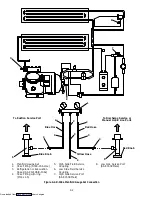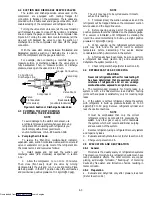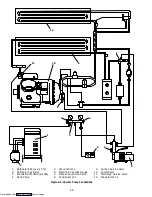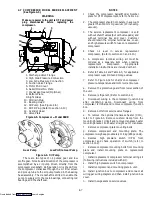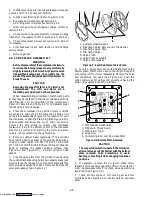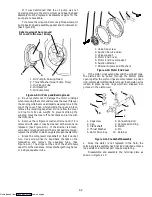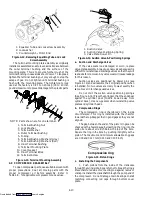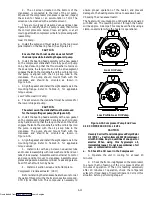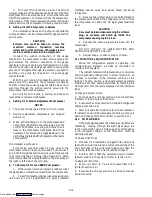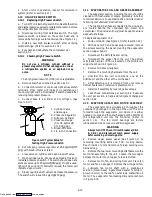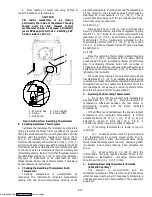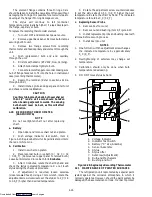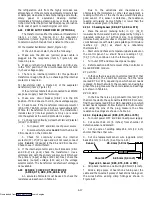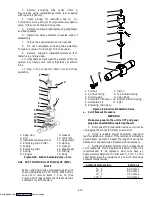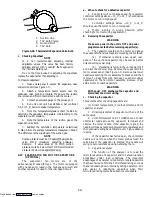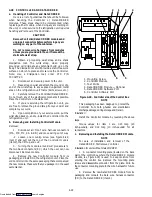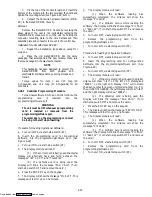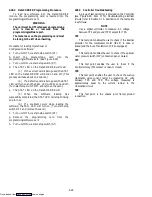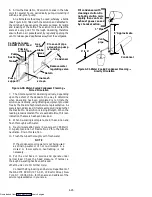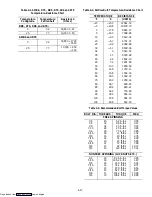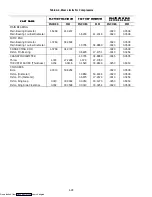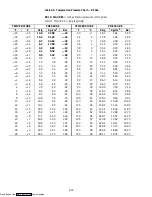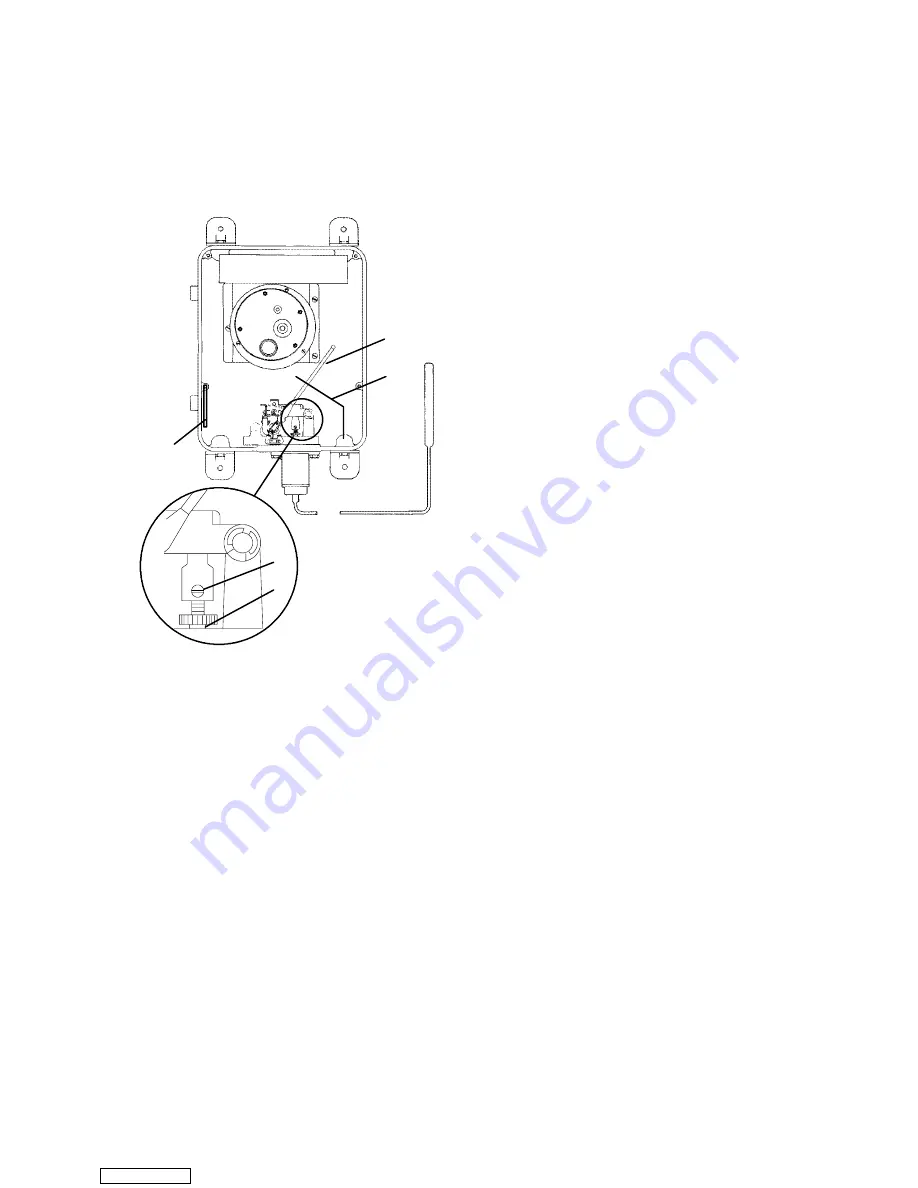
4-15
2. Note reading of meter and using Table 4-2,
convert resistance to temperature.
CAUTION
The inside mechanism of the control,
particularly the inside of the element housing
should never be oiled, however, control
mechanisms should be sprayed periodically
(every 60 days) with corrosion inhibiting CRC
3-36a or 6-66 or LPS no. 2.
3
4
1
2
5
1. Wind-up Key
2. Stylus
3. Set Screw
4. Pinion Shaft
5. Stylus Lifter
Figure 4-19. Partlow Recording Thermometer
b. Checking Resistance Thermometer
Calibrate the resistance thermometer by completely
filling a thermos container full of ice cubes or chips and
filling the voids between the ice with plain water. Stir the
solution until the mixture registers 0 to 0.3
_
C (32 to
32.5
_
F), as indicated by a laboratory thermometer.
Immerse the resistance thermometer in the 0
_
C (32
_
F)
solution and check its accuracy at this temperature. With
this instrument, be certain that the recommended length
of the check probe is immersed so that it accurately will
reflect temperature. Bear in mind that this measurement
checks the test probe at 0
_
C (32
_
F) only; it is possible for
this type of instrument to be inaccurate at other
temperatures. Rezero check thermometer, if necessary,
by manufacturer’s instructions.
c. Checking the Recording Thermometer Bulb
Temperature
Checking
temperature
is
accomplished
by
comparing the instrument’s indicated temperature
(stylus) with the known temperature existing at the
element sensing bulb. To properly check the temperature
of the recorder, the element sensing bulb should be
stabilized at a temperature of 0
_
C (32
_
F). This is
accomplished by using one of the two following methods,
whichever is more convenient.
Unit Running:
Place set point at 0
_
C (32
_
F). After unit has pulled
down to this temperature, allow the compressor to cycle
ON-OFF 3 to 5 times to be certain temperature has
stabilized at 0
_
C (32
_
F) as verified by the resistance
thermometer. If the temperature indicated by the
thermometer differs from 0
_
C (32
_
F) by more than
0.6
_
C (1
_
F) when compressor cycles off, rezeroing must
be performed.
Unit Off:
Place the recording thermometer element (sensing
bulb) in 0
_
C (32
_
F) ice-water bath. Ice-water bath is
prepared by filling an insulated container (of sufficient
size to completely immerse bulb) with ice cubes or
chipped ice, then filling voids between ice with water, and
agitating until mixture reaches 0
_
C (32
_
F) as shown by a
laboratory thermometer.
When the temperature at the element sensing bulb
has stabilized at 0
_
C (32
_
F), as indicated by stable stylus
indication, compare temperature indicated by stylus with
temperature shown by a laboratory thermometer. If the
two readings do not agree, the recording thermometer
should be rezeroed. (Refer to paragraph d.)
d. Rezeroing the Recording Thermometer
1. Be certain that the element bulb temperature
has stabilized at 0
_
C (32
_
F). Note the amount of
temperature difference between the test meter or
thermometer reading and the stylus indicated
temperature.
If the difference noted between the known element
temperature and indicated temperature is within
acceptable limits (0.3 of 0
_
C = 1/2
_
of 32
_
F), do not
attempt to rezero. If more than 0.3
_
C (1/2
_
F) in
variation, carefully note the number of degrees.
2. If recording thermometer is found to require
rezeroing:
(a) Loosen set screw, item 3, Figure 4-19 and
zero thermometer by turning pinion shaft, item 4.
Lengthening pinion shaft (counterclockwise) raises
stylus indicated temperature reading: shortening shaft
(clockwise) lowers stylus reading. Then retighten set
screw.
(b) Reset control at 0
_
C (32
_
F), start the
refrigeration unit and repeat accuracy check. After
temperature stabilization, recording thermometer
should be within 0.3
_
C (1/2
_
F) limits.
e. Replacing Recording Thermometer Element
(Bulb and Capillary)
The
element
is
mercury-filled
and
the
temperature-pressure of the element controls the stylus
which moves across the chart in response to temperature
changes as sensed by the bulb located in the evaporator
supply air.
Downloaded from


